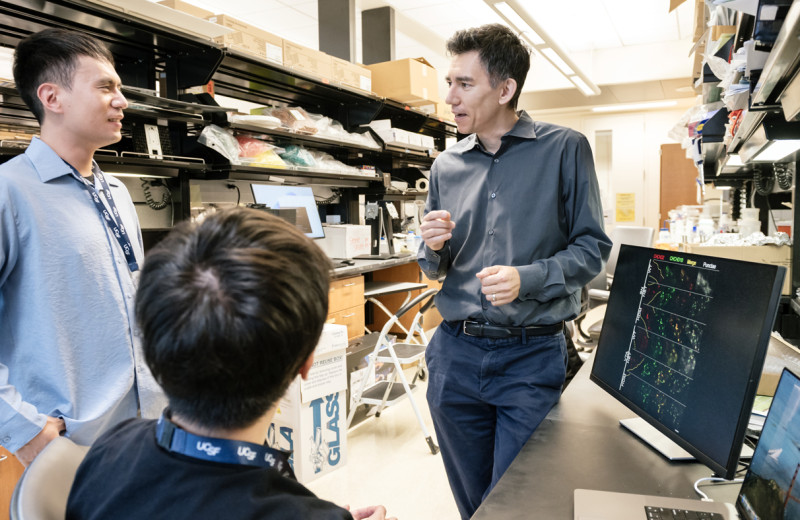Gladstone NOW: The Campaign Join Us on the Journey✕
Isha Jain, PhD, and her team developed a drug that mimics the effects of breathing low oxygen, which could be life-saving for people with mitochondrial diseases who rarely survive past childhood. In mice with Leigh Syndrome—the most common childhood mitochondrial disease—the drug extended lifespan three-fold and reversed symptoms, even when given during late stages of disease. The new drug shows the promise of gas-based therapies for mitochondrial diseases and other common brain and cardiovascular conditions for which low oxygen has been shown to be beneficial.
In this video, Jain and research associate Skyler Blume explain the science behind their discovery and the impact it could have for mitochondrial diseases. Read more about this discovery.
Featured Experts
Gladstone NOW: The Campaign
Join Us On The Journey
The Genome Editing Playbook Is Different in Neurons
The Genome Editing Playbook Is Different in Neurons
The striking findings of a new study could influence how gene therapies are designed for many genetic diseases.
News Release Research (Publication) Neurological Disease Conklin Lab Doudna Lab CRISPR/Gene EditingEvidence Builds for Disrupted Mitochondria as Cause of Parkinson’s
Evidence Builds for Disrupted Mitochondria as Cause of Parkinson’s
A new study from Gladstone Institutes strengthens the links between energy breakdown in cells and the onset of Parkinson’s, potentially illuminating new paths for treatment.
News Release Research (Publication) Parkinson’s Disease Neurological Disease Nakamura LabResearchers Reveal Intricate Control System for Key Immune Gene
Researchers Reveal Intricate Control System for Key Immune Gene
Scientists learn to fine-tune a gene that is centrally involved in regulating the immune system, offering potential clues for future autoimmunity and cancer treatments.
News Release Research (Publication) Autoimmune Diseases Cancer Genomic Immunology Marson Lab




